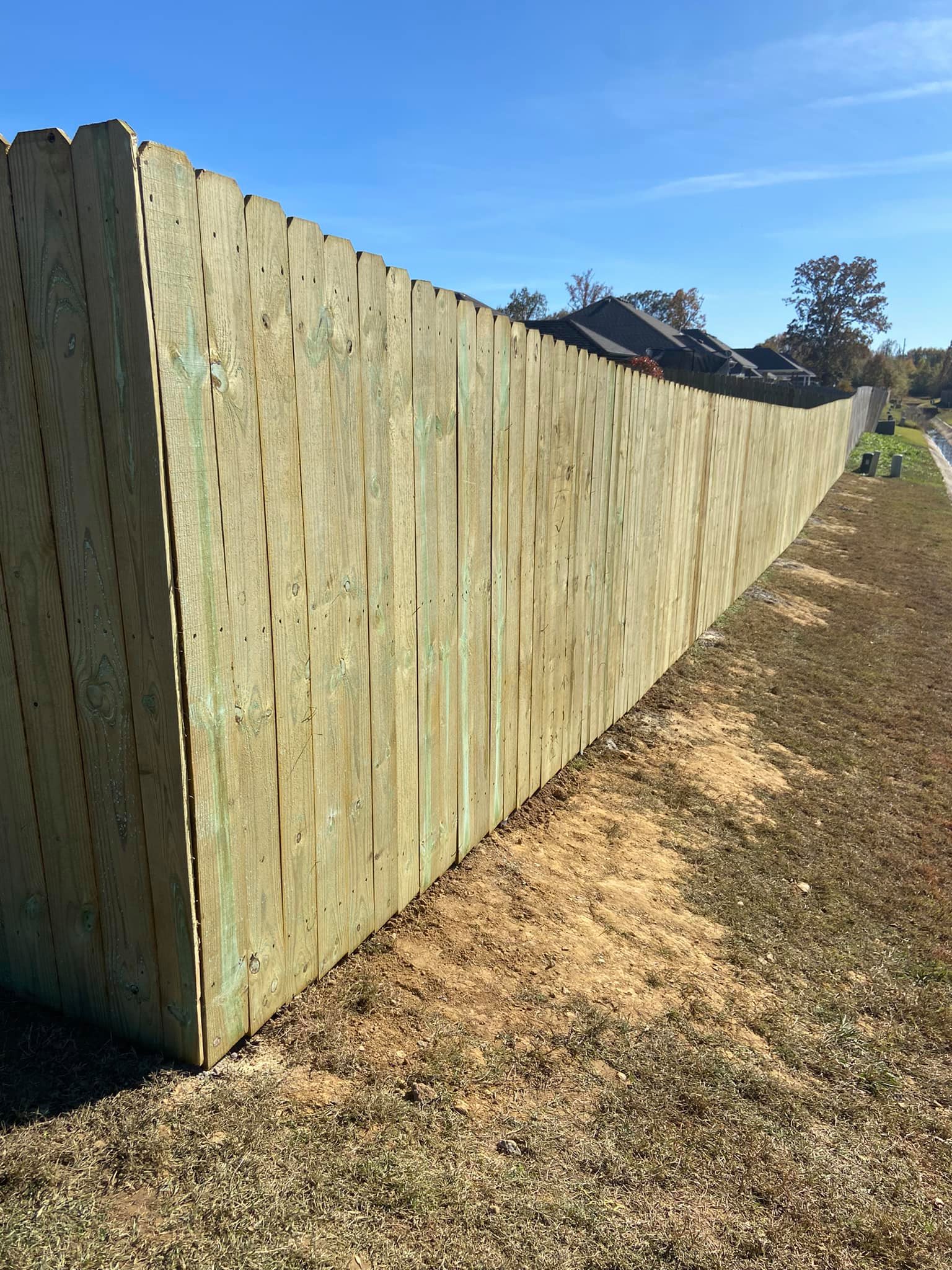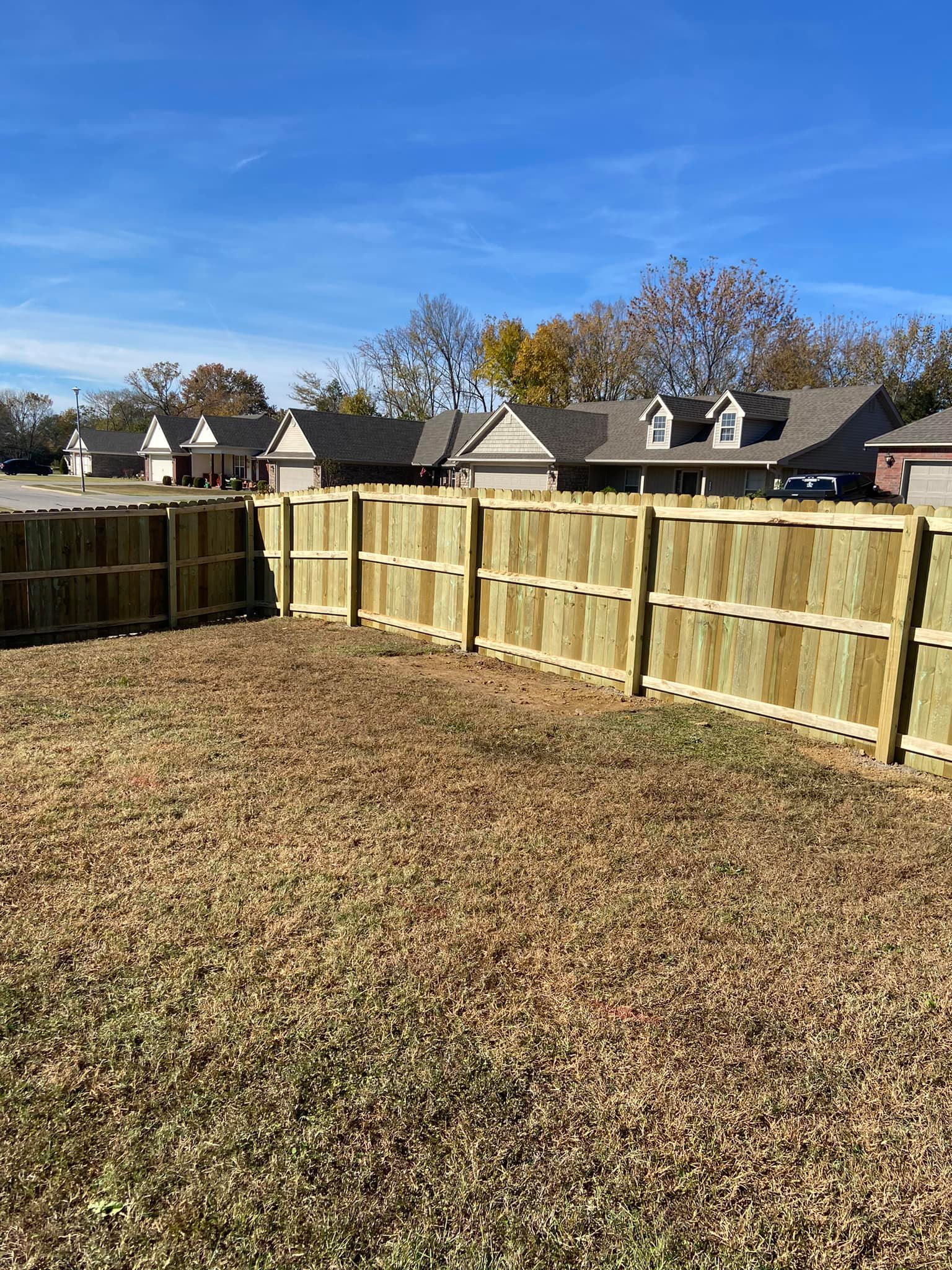An Extensive Appearance at Fence Options: Locating the Suitable Solution for Your Needs
In the mission to discover the best secure fencing remedy, property owners are often confronted with an excessive variety of choices, each providing unique advantages and obstacles. From the classic beauty of timber to the smooth durability of light weight aluminum, choosing the best material is only part of the equation. Considerations of privacy, safety, and maintenance include layers of intricacy to this decision-making procedure. Yet, beyond functionality, there's the matter of visual appeals, which can change an easy barrier right into a declaration of design. As we discover these important aspects, what genuinely defines the optimal fence for your one-of-a-kind requirements?
Understanding Secure Fencing Materials
When selecting the right secure fencing for your residential or commercial property, recognizing the different materials readily available is critical to making an educated choice. Each material supplies prospective drawbacks and distinctive benefits, affecting aesthetics, resilience, cost, and maintenance. Typical fence products consist of timber, vinyl, steel, compound, and aluminum.
Wood is a standard choice, prized for its all-natural charm and convenience. It can be tarnished or painted to match any kind of aesthetic preference, but calls for normal maintenance to stop rot and bug damage. Plastic secure fencing, on the various other hand, is a low-maintenance choice that stands up to weathering and parasites. Its series of designs and colors make it an eye-catching choice, though it can be much more costly upfront.
Aluminum and steel fences are recognized for their toughness and long life. Aluminum is light-weight and immune to deterioration, making it appropriate for a variety of climates. Steel supplies improved safety due to its robustness, but it might require periodic maintenance to stop corrosion. Compound fencing integrates wood fibers and plastic, supplying the appearance of timber with the durability of artificial materials. Often a lot more costly, its lasting resilience can validate the investment. Picking the suitable product depends on stabilizing these factors with your details requirements and budget.
Personal Privacy and Protection Factors To Consider
Selecting the right secure fencing product is only part of the formula; addressing personal privacy and safety and security demands is equally important. A fencing functions as an essential obstacle that shields property from undesirable intrusion while also making sure a wanted degree of seclusion. Privacy fencings, such as those made from wood, vinyl, or composite products, are made to block presence, typically standing 6 feet or greater. Strong panels and closely spaced pickets prevail functions, giving convenience and assurance to home owners seeking privacy from neighboring passersby or buildings.
Steel fencings, specifically wrought iron or steel, offer toughness and longevity, making it tough for intruders to breach. Chain-link fencings, while less aesthetically obstructive, can be strengthened with privacy slats or screens for included safety and security and reduced exposure.
Balancing personal privacy and safety is essential, as each secure fencing style supplies special benefits. Homeowners and organizations should think about local regulations, visual choices, and specific website susceptabilities when choosing the proper secure fencing option, ensuring both privacy and safety demands are fulfilled successfully.

Upkeep and Durability
While selecting a fence material, comprehending maintenance and toughness needs is crucial for long-lasting fulfillment. Each fence material displays unique features that impact its longevity and upkeep. Timber fences, while aesthetically pleasing, demand regular upkeep to avoid rot and pest damages. They need routine securing or tarnishing, which can be labor-intensive but necessary for lengthening their life expectancy.
In comparison, plastic secure fencing supplies a low-maintenance alternative, immune to weathering and bugs, yet prone to fracturing in extreme temperature levels. Light weight aluminum is immune to rust and requires marginal upkeep, while wrought iron, though more vulnerable to rust, can be maintained with routine painting and inspections for corrosion.
Compound fence, a mix of wood fibers and plastic, combines the all-natural charm of wood with the strength of synthetic materials, demanding very little maintenance and offering impressive toughness. Eventually, the choice of secure fencing product ought to straighten with both the ecological problems of the place and the property owner's ability to devote to its maintenance, ensuring a satisfying equilibrium between long life and initiative.
Price Comparisons
The monetary ramifications of choosing a fence material are a significant factor to consider for property owners - fence building Fort Smith AR. Different factors affect the overall price of a fence task, including product type, installment expenses, and long-lasting upkeep. Typical secure fencing materials such as wood, vinyl, chain link, and light weight aluminum each present distinct expense accounts, influencing the preliminary financial investment and subsequent monetary dedications
Timber fencing, usually extra inexpensive at have a peek at this site first, can vary extensively in price depending upon the kind of wood selected. It may incur higher upkeep prices over time, as it calls for normal treatments to stop rot and pest damages. Plastic fence uses an eye-catching balance, with a moderate preliminary expense and marginal maintenance, making it a preferred choice for budget-conscious home owners.
Chain web link fence attracts attention as one of one of the most economical options, with low installment and upkeep prices, though it might do not have the personal privacy and visual appeal some homeowners need. Alternatively, light her comment is here weight aluminum fence, generally extra pricey in advance, uses durability and low maintenance, which can offset its first cost with time.
When evaluating fencing choices, it is critical for homeowners to consider not only the upfront costs yet likewise the long-lasting monetary impact to ensure an economical, lasting investment.
Aesthetic Appeal and Design
Visual appeal plays a pivotal function in the choice of secure fencing, as it substantially affects the overall look and feeling of a property. The ideal selection can enhance architectural features and complement landscape design, creating a cohesive aesthetic experience. Whether the goal is to include a contemporary side, a rustic charm, or a typical sophistication, the style of fencing selected will certainly contribute to the building's identification.
Fence products use varied aesthetic possibilities. Composite fencing integrates the charm of timber with the durability of artificial products, offering a well balanced remedy for several.
Design and color are also crucial aspects in the aesthetic consideration. Neutral tones can develop an unified background, have a peek at this website while strong colors may work as statement pieces. On the other hand, the layout-- varying from picket to personal privacy styles-- can either highlight visibility or ensure privacy, more tailoring the fence to the residential or commercial property's needs.
Conclusion
In evaluating secure fencing choices, a multidimensional approach is essential, taking into consideration products such as wood, aluminum, vinyl, and steel. Each product presents distinctive advantages in regards to privacy, protection, cost-effectiveness, sturdiness, and maintenance. The visual allure and placement with property design additionally notify the decision-making process. By thoroughly evaluating these elements, homeowners can determine a secure fencing solution that efficiently incorporates functionality with visual consistency, eventually boosting both the energy and aesthetic worth of their home.
Common fence materials include timber, vinyl, steel, composite, and aluminum.
Compound secure fencing combines timber fibers and plastic, delivering the look of wood with the resilience of artificial products. Typical fencing materials such as wood, plastic, chain web link, and aluminum each existing unique cost accounts, impacting the first investment and succeeding monetary dedications.
Composite fence integrates the beauty of timber with the toughness of synthetic products, providing a well balanced service for lots of.
